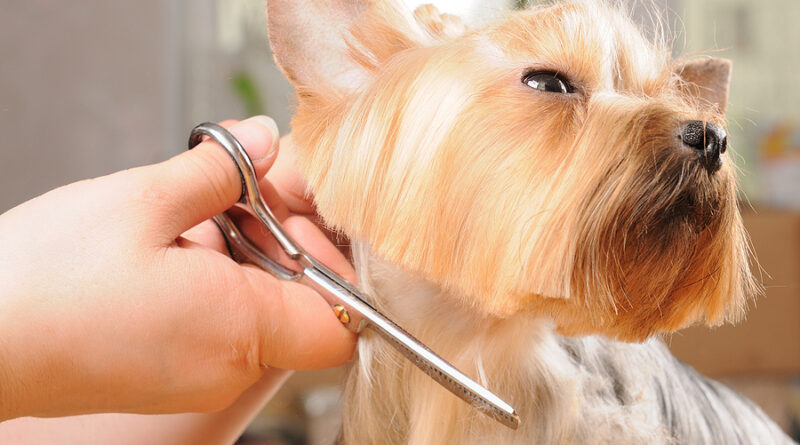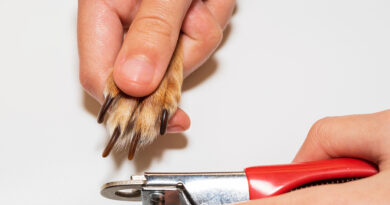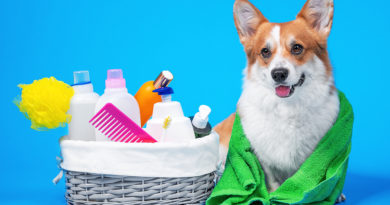Grooming for Dogs – A quick how to in home dog grooming
Featured image by © bigstockphoto.com / scorpp
Grooming for Dogs – A DIY guide
There is nothing cuter than a freshly bathed and groomed dog. Sure, there will be a fuss and a round of hide and seek, before getting them in the bath, but when its all said and done, you will see a huge smile on your dog’s face. The smile that says I’m clean, and I feel good. We hope to help you decide if you are up for grooming the dog yourself, or simply just pay the fee every couple of months and take them to the groomer’s. Heck, nowadays, they’ll even come to you in their mobile grooming truck.
The dog grooming salon is usually the preferred method by most people, as most of us have probably felt that this is best left to the professionals anyway. Proper pet grooming involves, complete skin care, coat care, nail trimming, ear cleaning and of course, the haircut. After all, it is as easy as dropping your dog off and picking them up again after a couple of hours. In that time your dog would have had a bath, haircut, blow dry, brush and nail trim.
If you have the extra time, or need to save some money, grooming your dog yourself is rewarding option worth considering. If so, it is a smart idea to start the grooming process at a very young age with bathing, brushing, nail trimming on a regular basis, so that it will get used to being handled and not be afraid of the clippers. I remember back in the day, our Cocker Spaniel did not like baths, and was even more distrusting of the blow dryer.
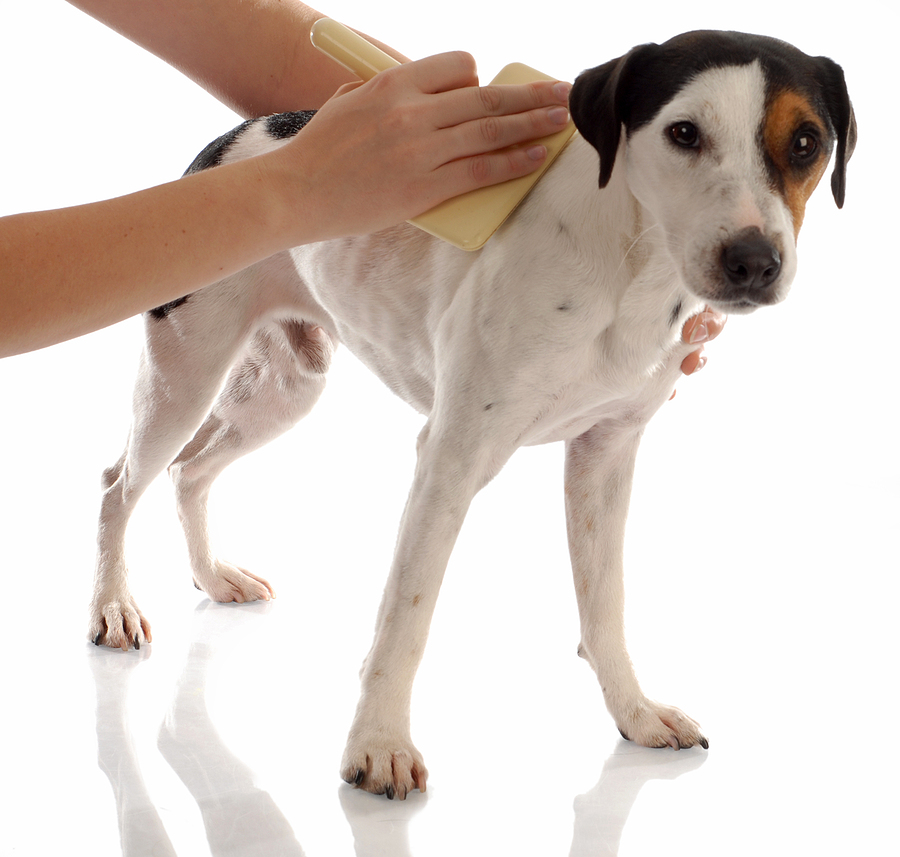
How to groom a dog
A dog’s grooming requirements primarily depend on the breed and hair type. For instance, the Afghan Hound and Poodle require regular grooming, whereas the Beagle and Boxer give you more flexibility. Most dogs enjoy being brushed, which helps both maintain a healthy coat, and build a strong bond between you and your dog. Long hair breeds will require more frequent care, with daily brushing recommended to prevent tangling and matting. Dogs with medium length hair should be brushed at least once a week. Short hair breeds usually only require the occasional brush to get rid of shedding hair.
It is important to select a good brush that’s suitable to your dog’s hair type. Try to brush your canine compadre regularly to remove dirt and debris, prevent matting, control shedding, and create a shiny coat. It is also important to pay close attention to the areas where matting frequently occurs; behind the ears, under the legs, on the haunches. Some of the more popular brushes include:
How to brush your dog
- Always bush down and out, in the direction the coat grows and away from the dog’s skin. Dogs don’t like to be brushed backwards.
- Be gentle not to damage your dog’s coat by pulling hairs until they tangle and break. Go slow and take your time.
- Reward your dog. Make grooming a positive experience.
- For matted hair, apply a coat conditioner or mat spray and leave it on for several minutes. Use a mat-splitting tool to get through the tangle. Avoid scissors, else you may end up at your vet’s office for stitches; it happens more often than you’d think. Still no luck? Take your dog to a groomer. They may be able to de-tangle the mat, or shave the area.
During your grooming session, its also a good idea to check your dog for ticks, and daily during tick season. Ask your vet to show you how to safely remove a tick. Partial removal can be a problem. There are tools available that can help make tick removal easier.
Additionally, it’s good to check your dog’s pads are not dry, cracked, or injured in any way. Sometimes, excessive hair may grow between your dog’s toes and can become matted or cause other problems. You should trim the fur to be even with the paw pads or slightly shorter, but carefully, to prevent cutting your dog.

How to Trim Dog Nails
Nail trimming is perhaps the most stressful part of the grooming experience. As most of us know, dogs typically don’t like to have their nails trimmed. Your vet and/or groomer can show you how to safely trim nails.
Nails grow at different rates, depending on your dog’s lifestyle, so the frequency that you will be required to trim them can vary. If your dog walks on hard surfaces such as pavements, they may not need as much trimming as a dog that plays and exercises on grass.
Having the right nail clippers will certainly make the job easier. There are many types of nail clippers, and are generally categorized as guillotine and scissor types. We feel that the guillotine types are easiest to use on dogs. Some dog owners find rotary trimmers a safe alternative to clippers, but it usually takes more time and your dog will likely require some training to tolerate this approach.
It is important to realize all dogs have a quick, which is a blood supply which contains nerve endings. This is typically the upper (closer to the paw), dark part of the nail. This can be painful if clipped. Nails should be trimmed regularly to keep the quick from growing too long. Regular trimming can help keep the quick shorter and decrease the chances of cutting it in the first place.
Accidents happen, so before you start trimming nails, make sure you have easy access to a product that will stop the nail from bleeding if cut too short. We recommend a cauterizing powder, like Kwik Stop.
Prime your dog with a reward after the job is done. Frequent praise and treats will make it easier next time.
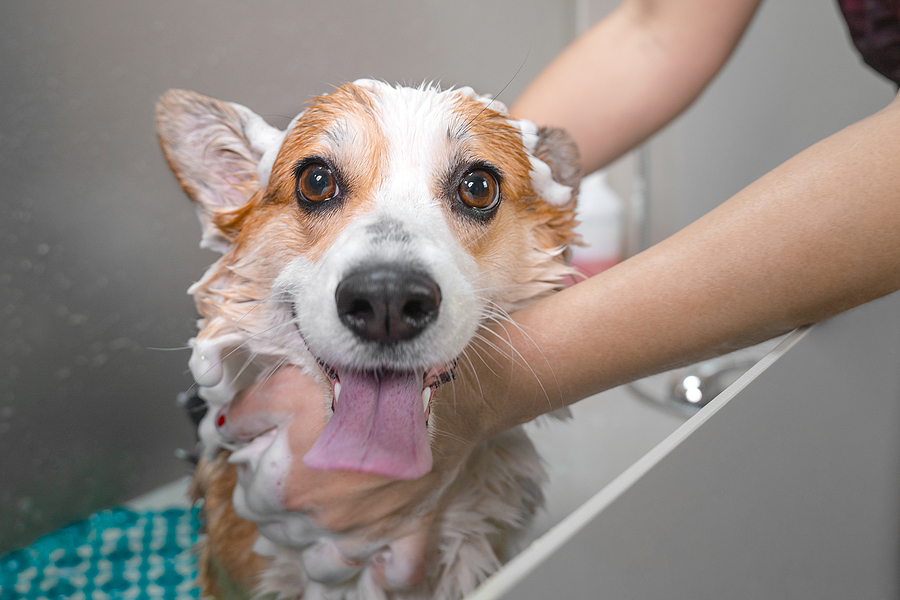
How often should you wash your dog?
Simply put, there are a lot of factors that determine how often to wash your dog. Dogs with medium to long coats, a bath could be needed from weekly to every 4-to-6 weeks, provided the coat is properly maintained in-between baths.
You don’t need to be a genius to bathe your dog. Much like bathing yourself, Use a gentle vet approved dog shampoo and conditioner, or make your own natural shampoo if you are inclined to do so. Avoid using products intended for humans. Start on the body and legs, working your way up to the head. Ensure to cover their eyes and ears, especially when rinsing, to prevent water and shampoo entering as this can cause bacteria. The key in bathing is to thoroughly rinse the shampoo and conditioner out of their coat. When finished towel dry your dog, the brush the coat to ensure all tangles and mats are removed. You may blow dry your dog’s coat. Some love it, some hate it.

